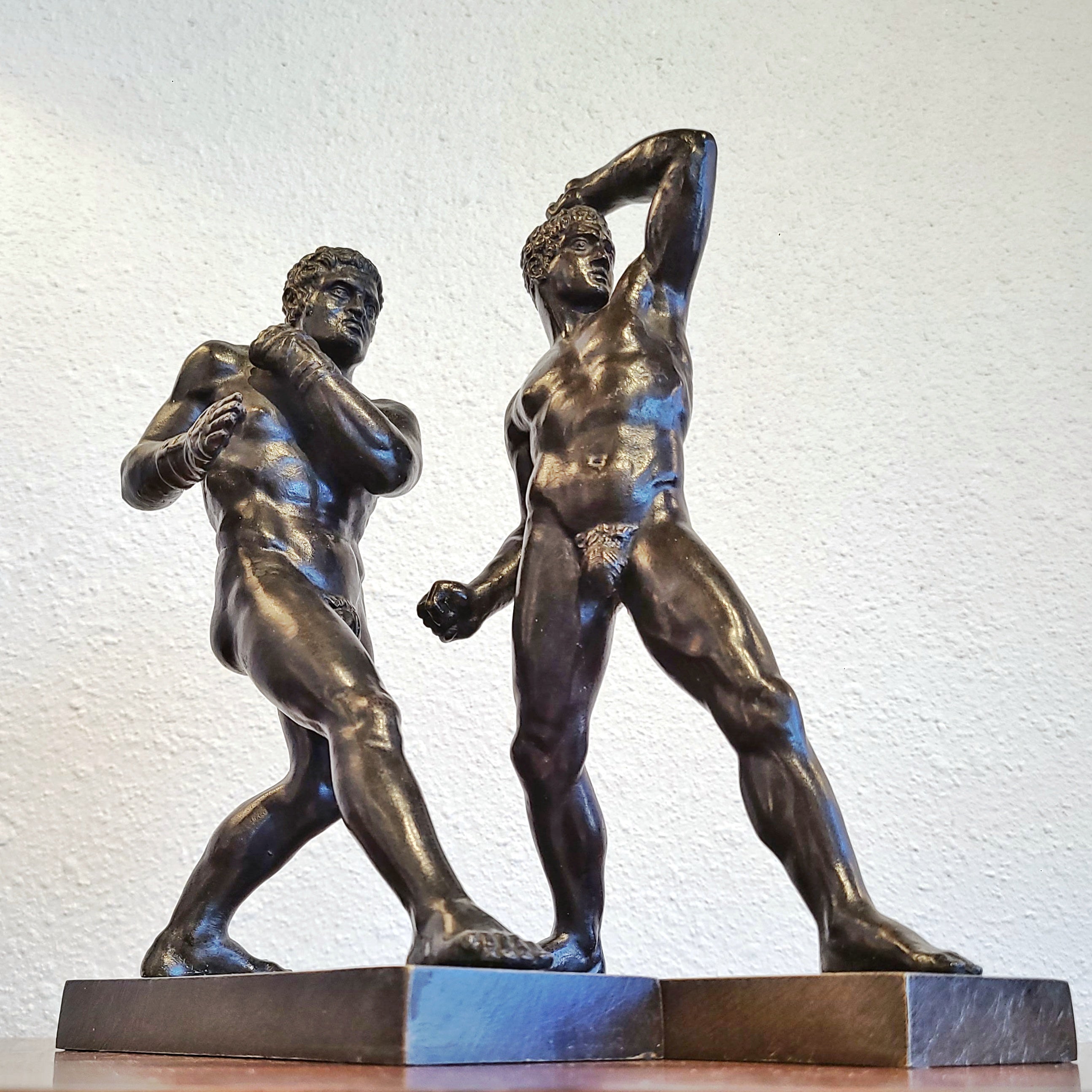
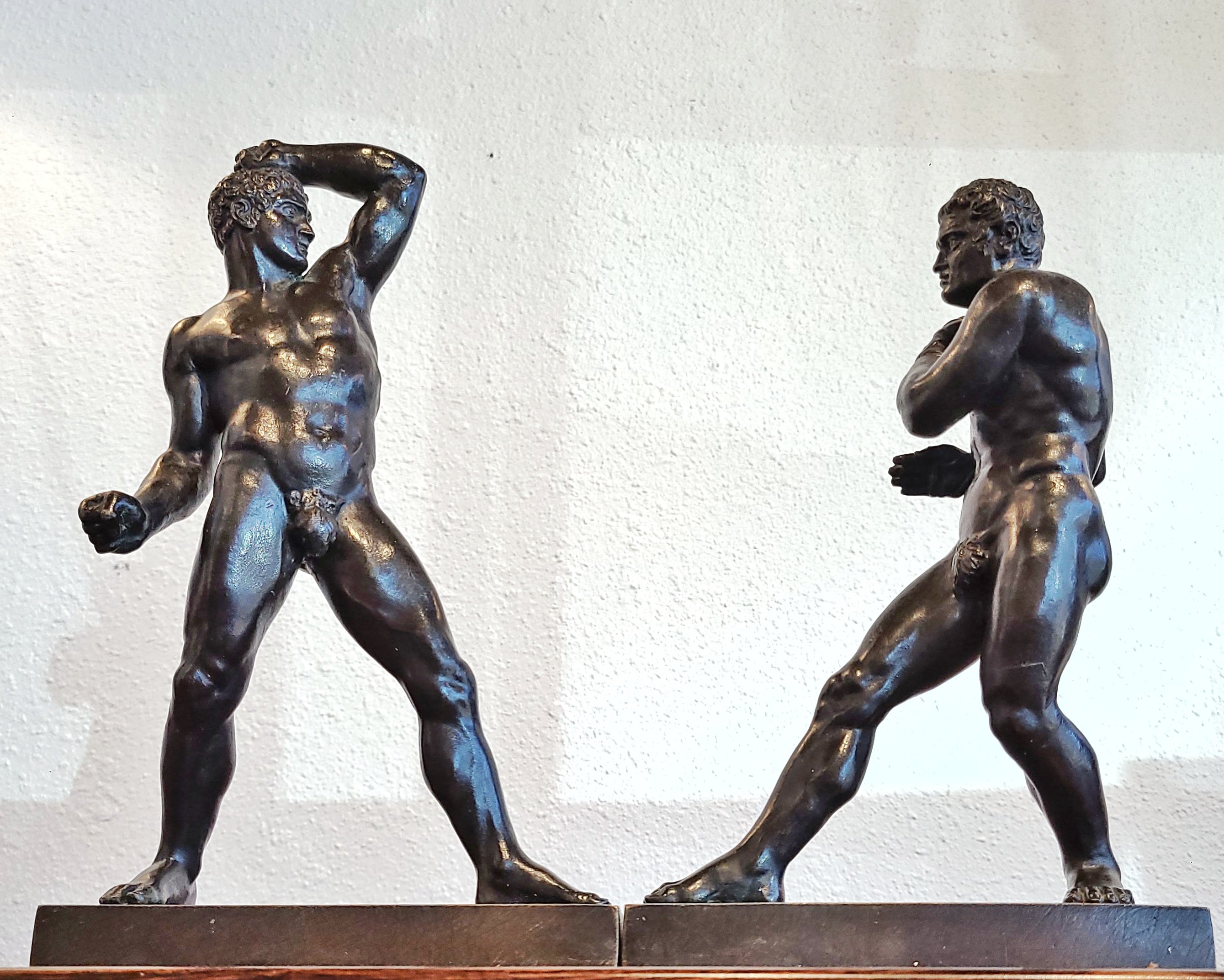
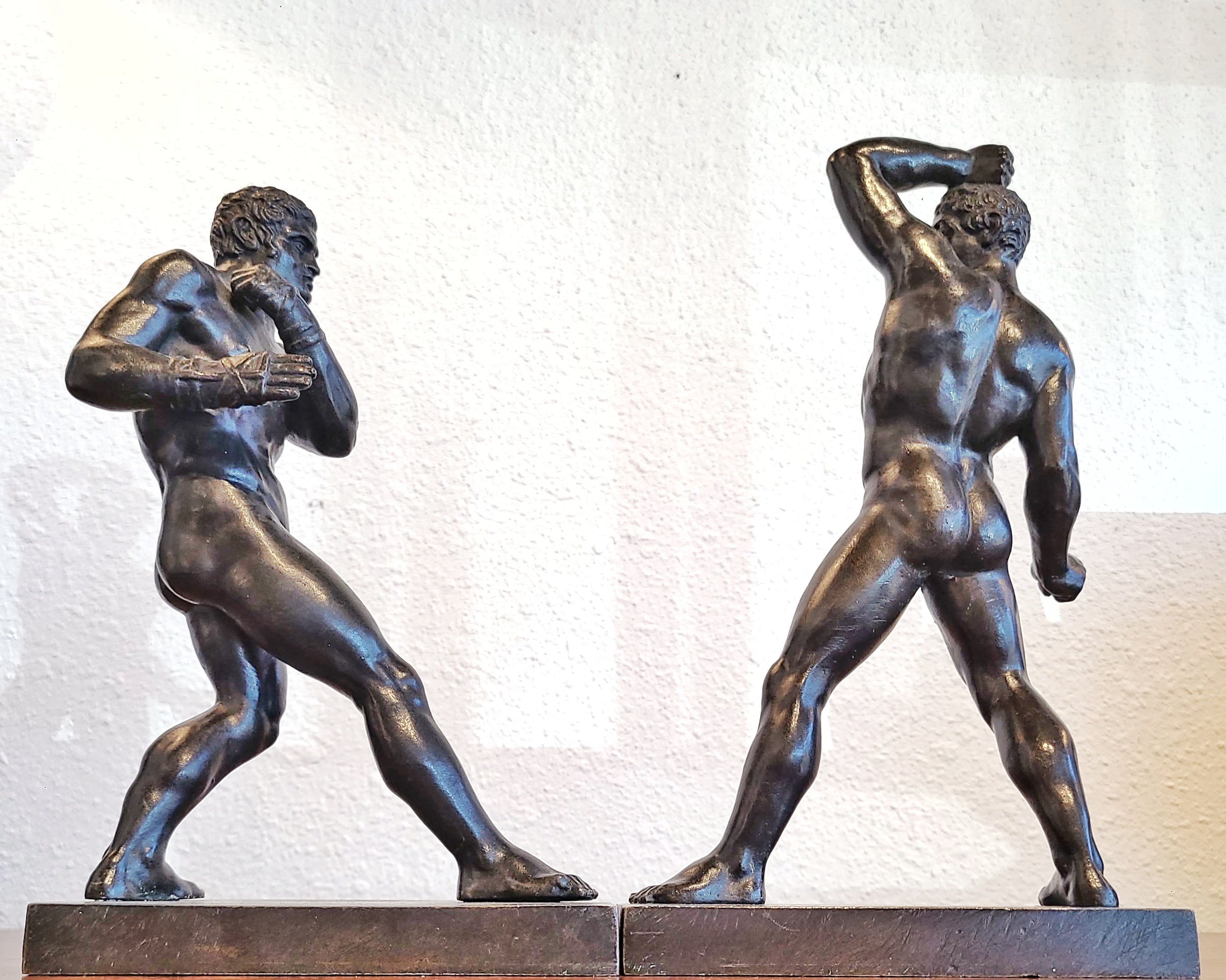
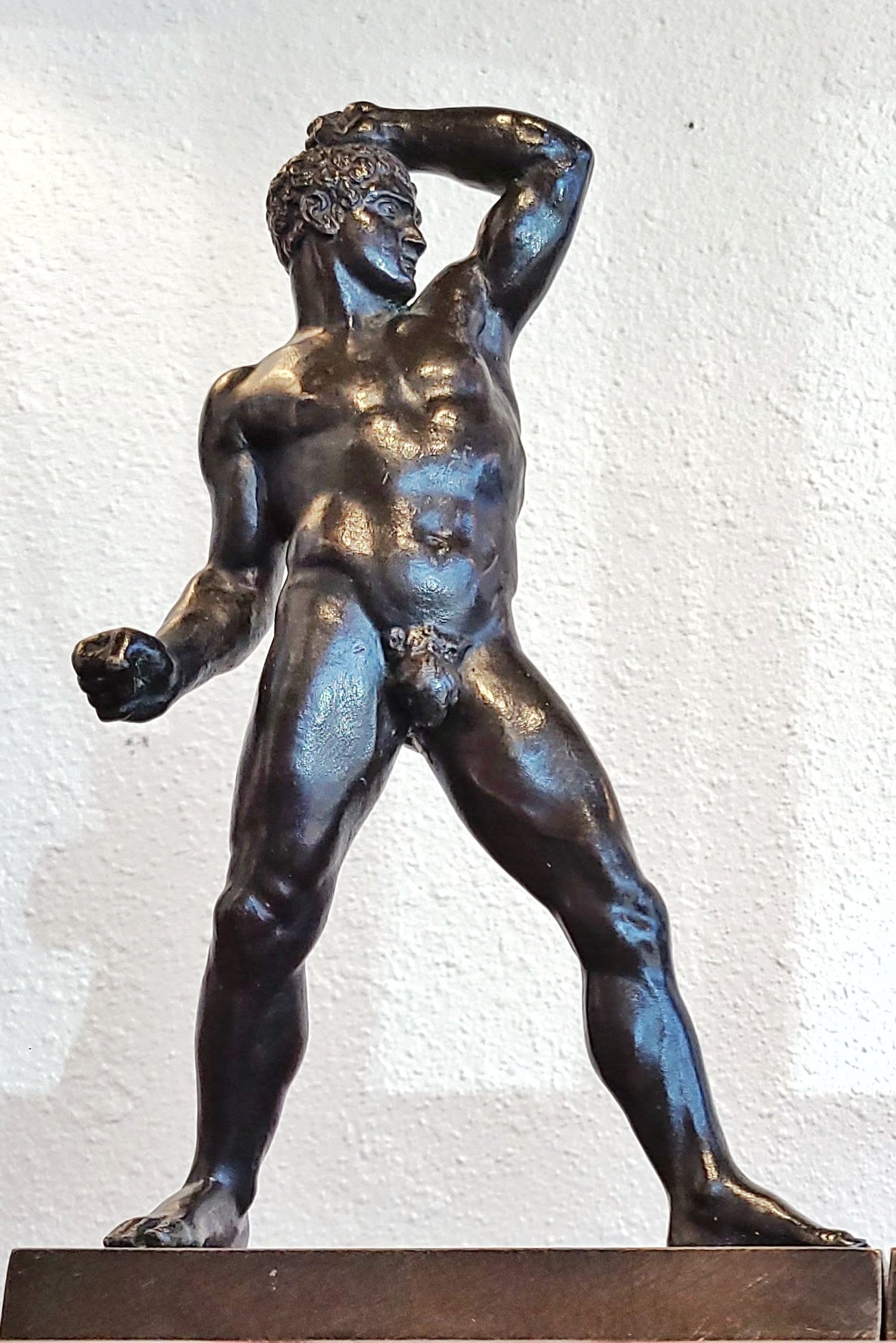
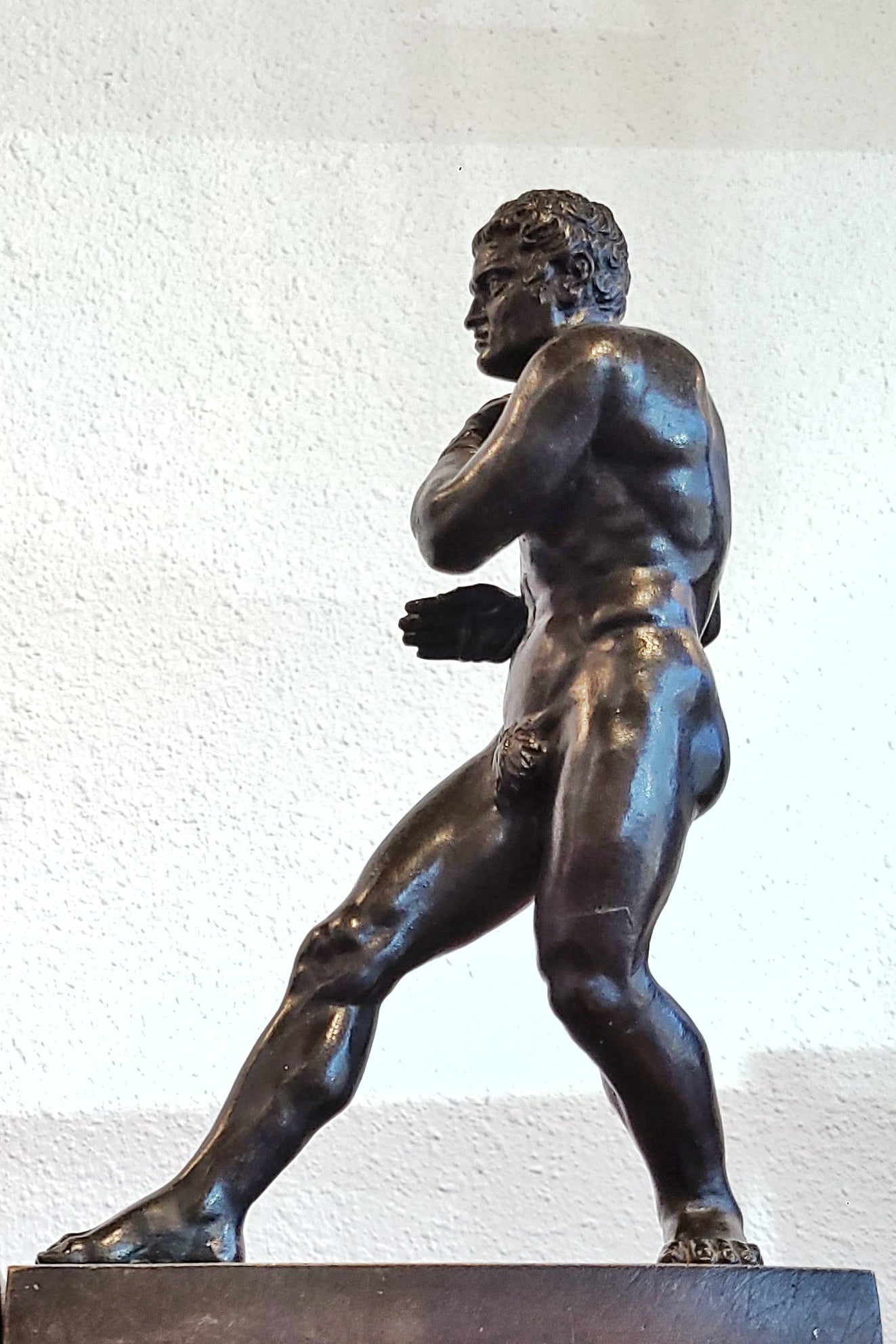
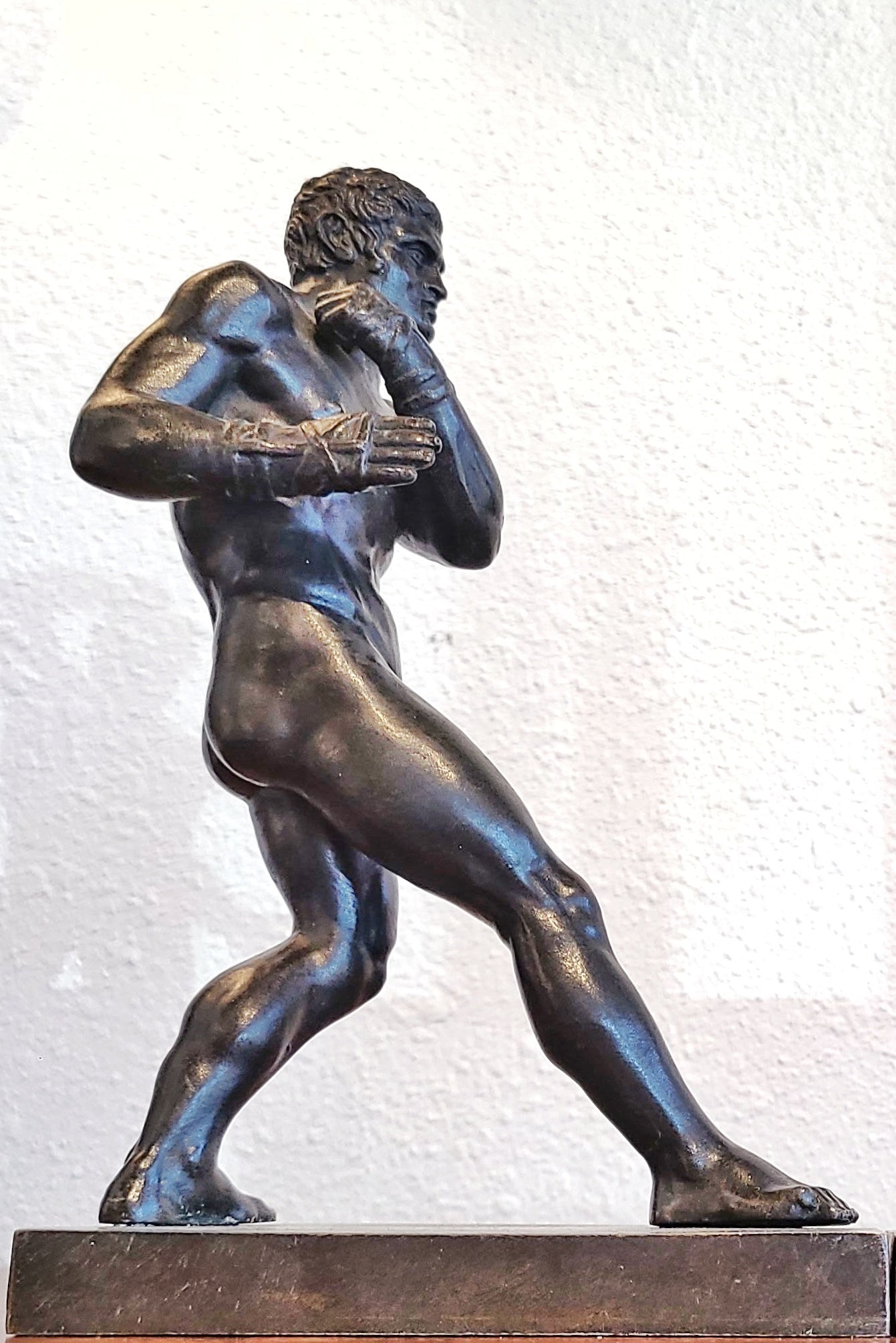
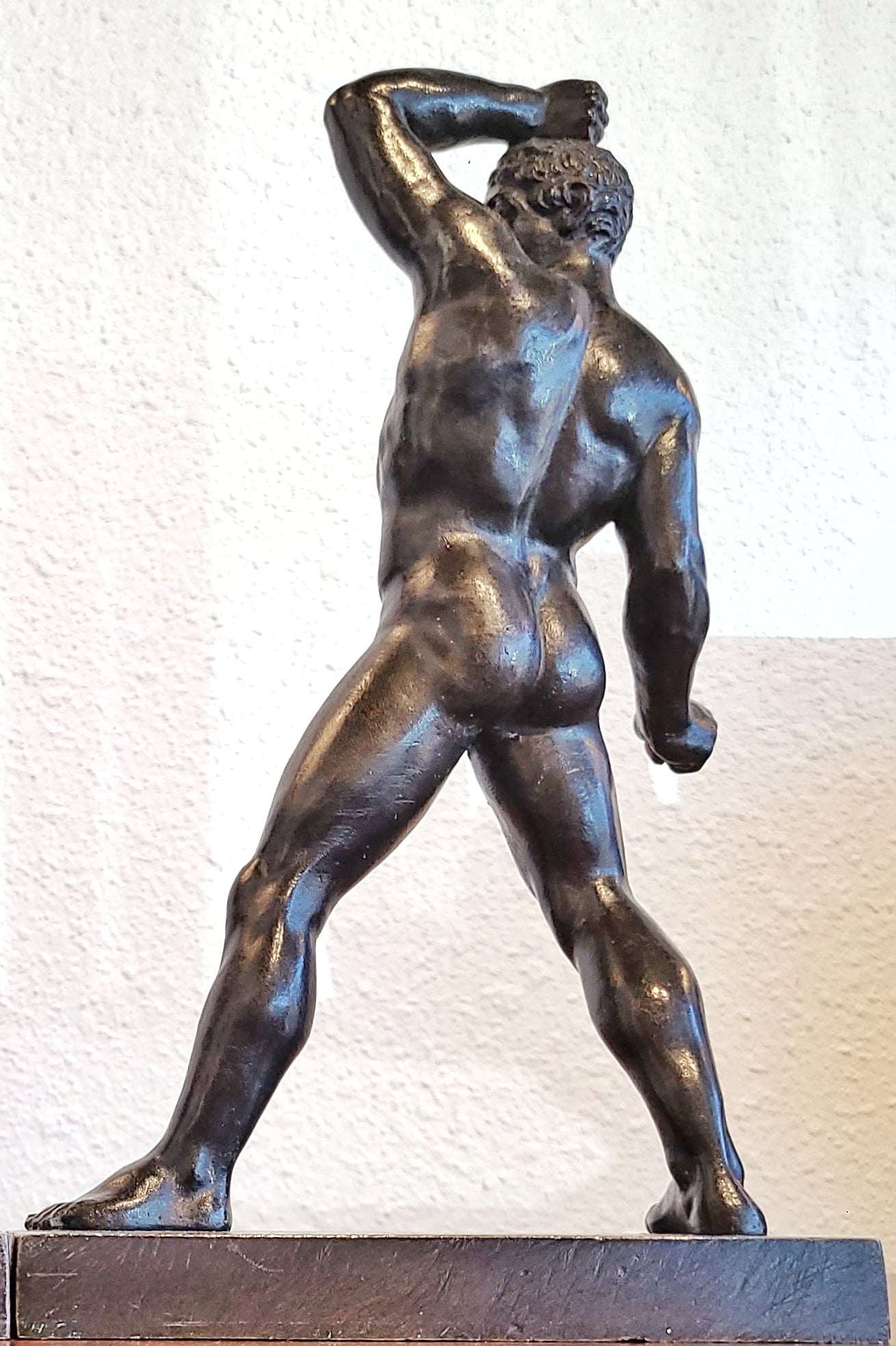
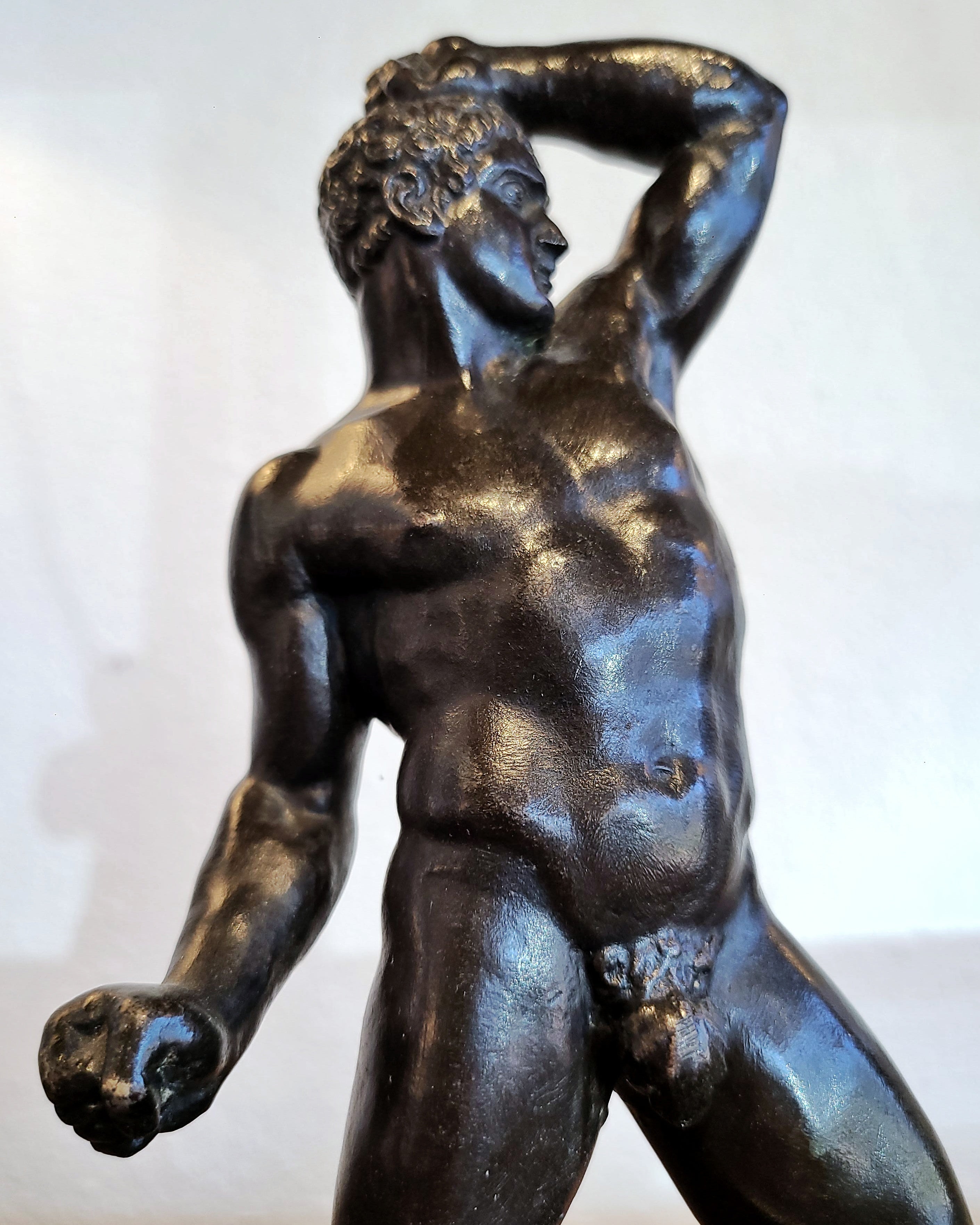
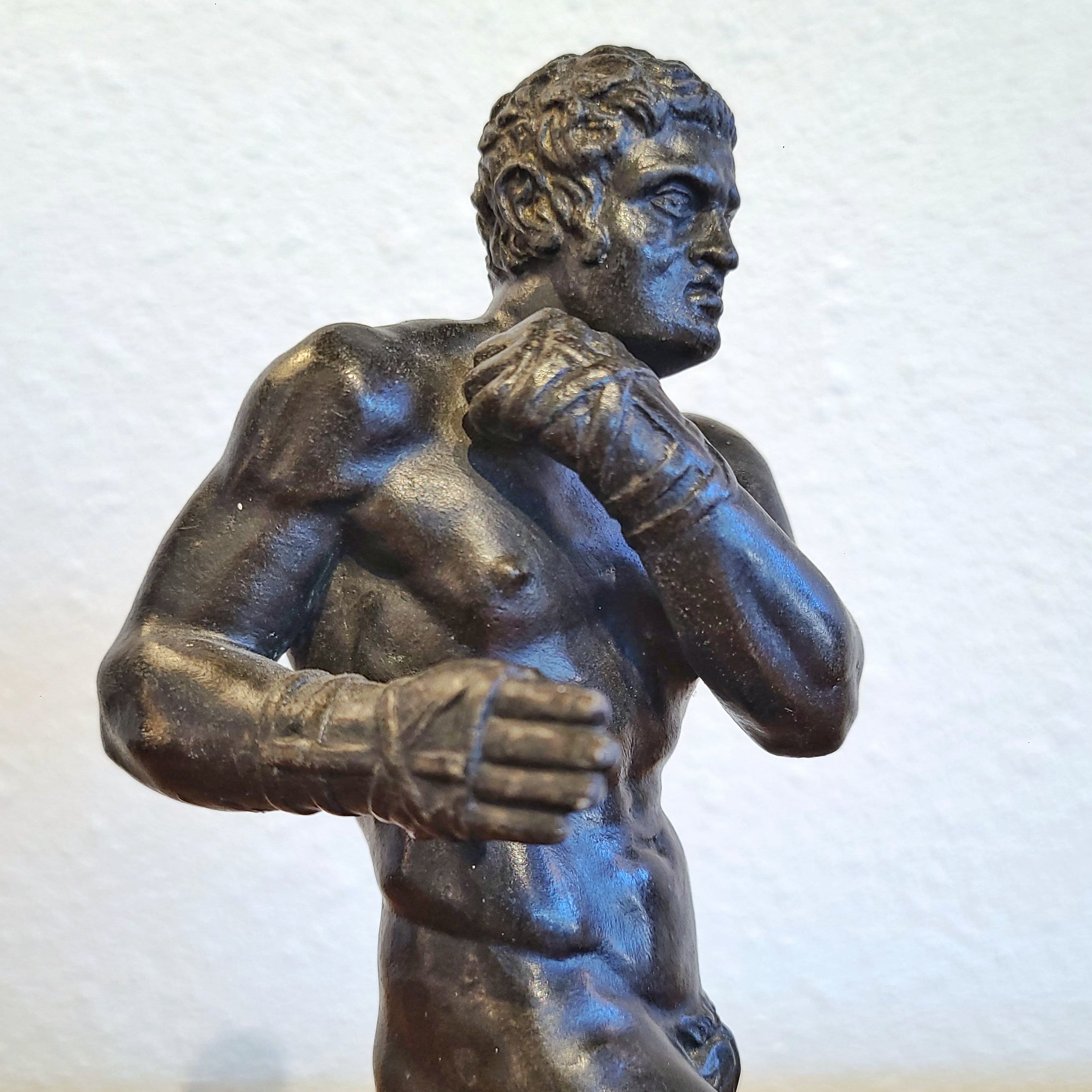
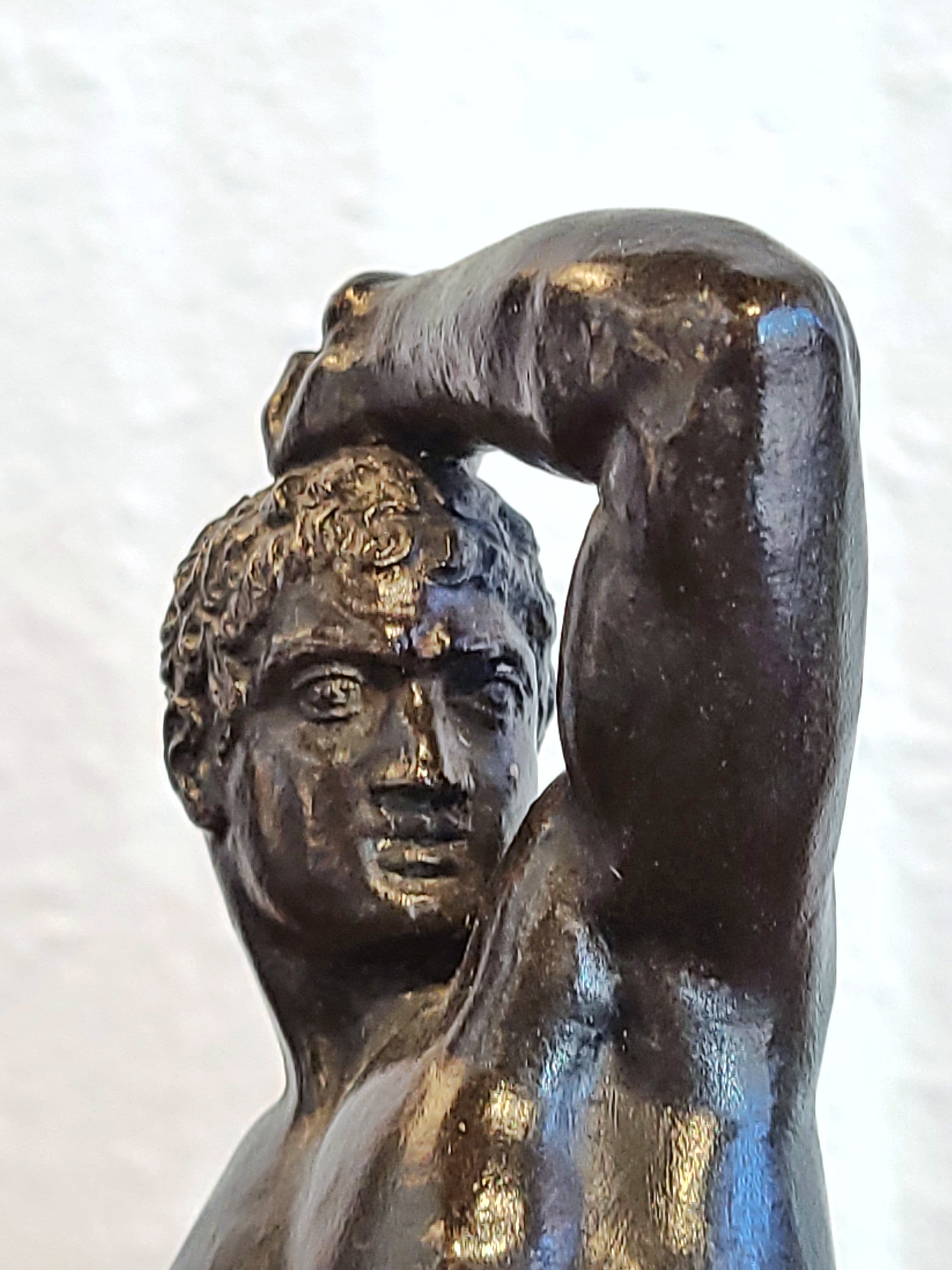
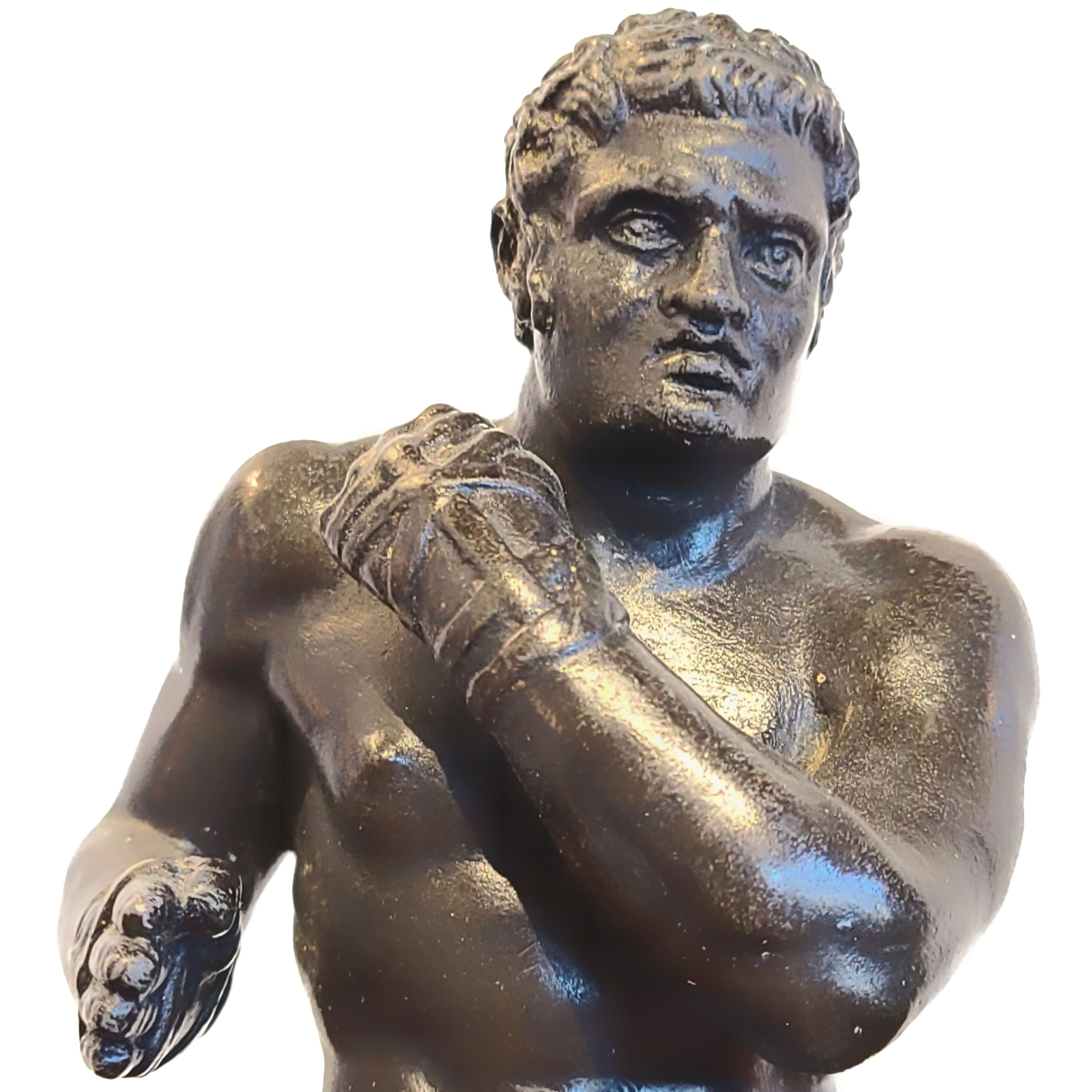
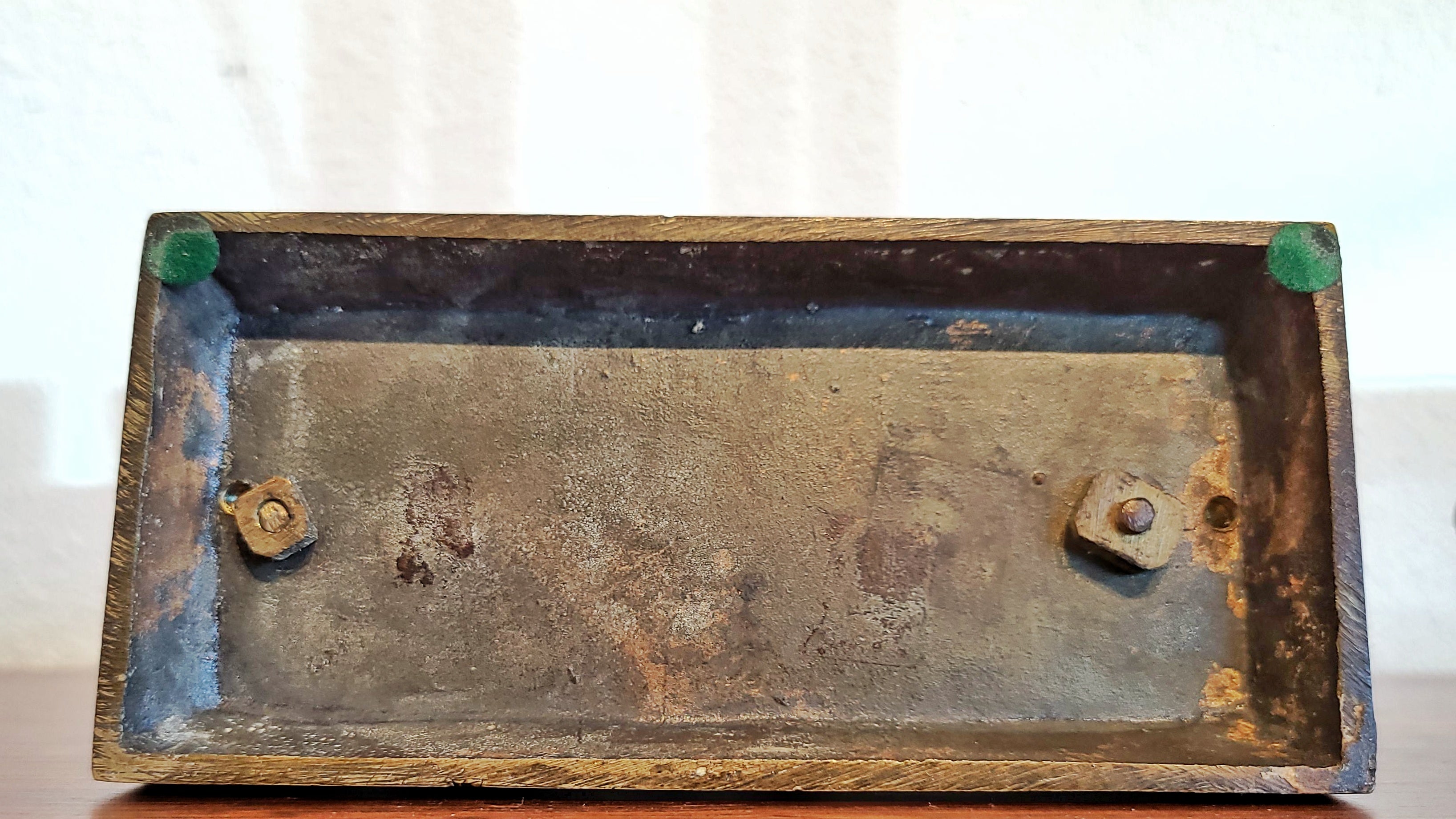
EARLY 19th CENTURY GRAND TOUR BRONZES OF CREUGAS & DAMOXENOS (THE PUGULISTS) AFTER CANOVA
CONTACT US HERE ABOUT THIS ITEM.
A superb pair of early 19th century 'Grand Tour' souvenir bronze figures of the Greek boxers Creugas & Damoxenos, modeled after the marble originals by the Italian sculptor and architect Antonio Canova (1757-1822). Canova loved classical subjects and is revered as the master of neoclassic sculpture executed with a contemporary flair. Having studied the works of Pausanias (110- 180), a Greek geographer who recorded observations from his travels in ten books called the 'Periegesis of Greece.' Canova was taken with one story in particular that chronicled the legendary fight between Creugas of Durres and the treacherous Damoxenos of Syracuse. The two athletes met at the Nemean Games and faced off in an epic competition. The powerful men battled for hours and neither could get the advantage over the other. After several hours of boxing without a winner, Creugas and Damoxenos decided to settle the competition by each man delivering one undefended blow to the other. In Greek boxing, fighters focused on punching the head. Going first, Creugas struck Damoxenos a strong blow to the head but did not finish him. Then, Damoxenos, who had opted to go second, thrust his extended fingers directly into Creugas' side, through his ribcage, and disemboweled his opponent. As a result, the judges disqualified Damoxenos for killing Creugas, and Creugas was declared the winner— posthumously.
Canova chose to portray Creugas with his arm raised, in preparation for the blow, and Damoxenos prepared to lunge forward with his knife-like hand. These two wonderful and powerful statues created by Antonio Canova, are featured alongside the statue of Perseus Triumphant (1800–1801) in one of the most important locations of the Vatican Museums: the Octagonal Courtyard. The most significant sculptures of the Vatican's collection are on display for the public here every day. Historically, the Octagonal Courtyard was the first place chosen by Pope Julius II to host his collection of Classical Antiquities, many of which were subsequently pillaged by the French in 1798.
ANTONIO CANOVA (1757–1822) was the leading Italian Neoclassical sculptor of the late 18th and early 19th centuries, known for his ability to carve exquisite figurative sculptures in marble with such refinement that they appear as supple as real flesh. Along with painter Jacques-Louis David, Canova defined the ordered and rational aesthetic of the Age of Enlightenment. Inspired by the classical, Renaissance, and Baroque sculptures he saw on his Grand Tour of Italy in 1779–80, he sculpted religious and mythological subjects, such as The Three Graces (1814–17), as well as portraits and funerary monuments. The most sought-after sculptor of his day, he received commissions from wealthy patrons, popes, and political leaders throughout Europe and beyond. Canova's bust of Napoleon Bonaparte became one of the most reproduced images of the emperor, while his statue 'Perseus Triumphant' (1800–1801) was the first contemporary work to enter the Vatican Museum when Pope Pius VII acquired it in 1801.
Being a keen student of classical subjects, Canova set out in 1795 to immortalize the legendary fight between Creugas of Durres and Damoxenos of Syracuse, a story recorded by the Greek geographer Pausanias (110- 180) in his 10-volume travelog 'Periegesis of Greece.' Canova developed the preliminary drawings for the two fighters and carved the larger-than-life-size statues over the next few years. Creugas was completed in 1801 and Damoxenos in 1806. Pope Pius VII (1742-1823) purchased the two pugilists and the statue of Perseus Triumphant (1800–1801) as part of his effort to restore masterpieces to the Vatican Collection after the French army had looted the museums in 1798. Pius VII's purchase of these statues was significant at the time because it proudly reaffirmed a policy of national prerogatives, despite the robbery of those treasures inextricably linked to Rome. Today, Antonio Canova's Creugas and Damoxenos remain in their place of honor, flanking the statue of Perseus in the Octagonal Courtyard of the Vatican Museums.
Details
- Dimensions
- 6.25ʺW × 3ʺD × 10.5ʺH
- Styles
- Figurative
- Grand Tour
- Art Subjects
- Figure
- Nude
- Sport
- Period
- Early 19th Century
- Place of Origin
- Italy
- Item Type
- Vintage, Antique or Pre-owned
- Materials
- Bronze
- Condition
- Good Condition, Original Condition Unaltered, Some Imperfections
- Color
- Bronze
- Condition Notes
- Excellent Vintage Condition. Beautiful Dark Patina.












